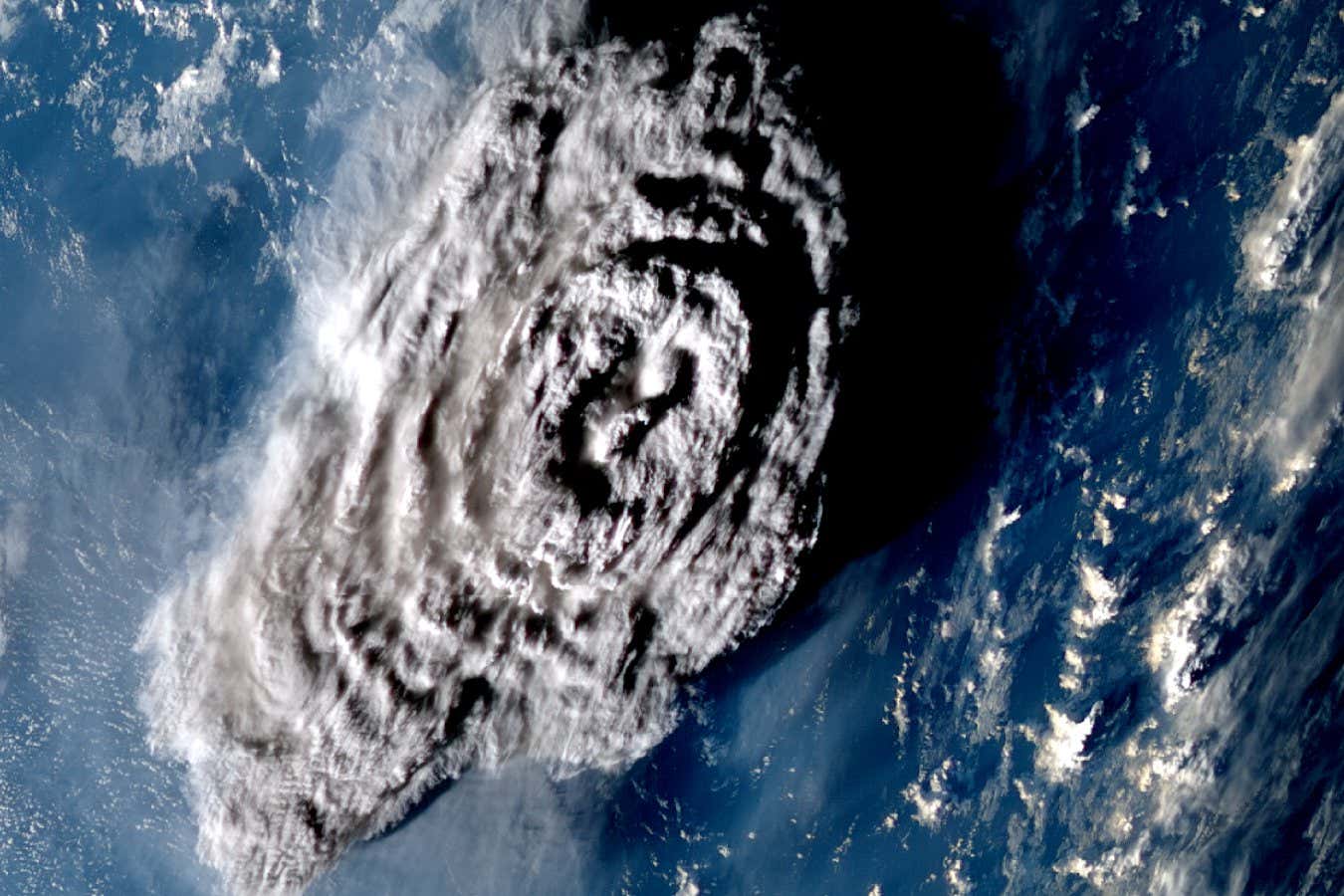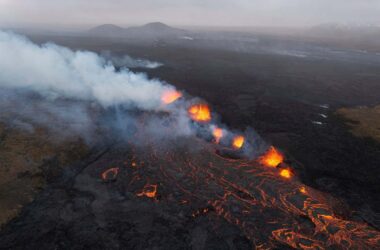Satellite photo of Hunga Tonga-Hunga Haʻapai volcano on 15 January 2022, about 100 minutes after the eruption started
Simon Proud/Uni Oxford, RALSpace NCEO/Japan Meteorological Agency
The eruption of the Hunga Tonga-Hunga Haʻapai volcano last year caused an underwater volcanic flow that destroyed hundreds of kilometers of telecommunications cables and reshaped the seafloor.
This eruption in Tonga was the most powerful of the 21st century, shooting ash 57 kilometers into the sky and generating 90-meter-high tsunami waves. “It was a really exceptional event,” says Michael Clare at the National Oceanography Centre in Southampton, UK.
While the atmospheric impacts of the eruption were well-documented, the effects on the seafloor remained unknown. “Something really profound had happened on the seafloor and we didn’t know what it was,” says Clare.
Shortly after the eruption, Clare and his colleagues decided to investigate the eruption’s impact on the ocean floor.
During volcanic eruptions, large amounts of material, such as ash and lava, are released into the air. Some of this material falls back down and forms pyroclastic density currents, which are like hot rock clouds rolling down hillsides. In the case of the Hunga Tonga-Hunga Haʻapai eruption, the material plunged straight into the ocean, creating a destructive underwater density current.
By mapping the locations of underwater telecommunication cables and determining when they were destroyed, the team estimated that the current traveled at a speed of 122 kilometers per hour.
The team also compared the seafloor maps before and after the eruption, discovering that the density current had traveled over 100 kilometers across the ocean floor, leaving deep grooves in its path.
“This is the first time these underwater flows have ever been observed with modern technology,” says Clare. “The insights from the study have helped us understand a hazard that wasn’t previously recognized as potentially significant.”
While it is challenging to prevent the damage caused by volcanic eruptions, a better understanding of underwater density currents can assist the telecommunications industry in preparing for future events.
“The documentation of the impact of the Hunga-Tonga eruption on the seafloor geomorphology is a remarkable achievement,” says Charles Paull at the Monterey Bay Aquarium Research Institute in California. “The paper will likely be highlighted in geology textbooks as a reminder of the scale of geologic hazards and extreme sediment flows that occur on Earth.”
Topics:








